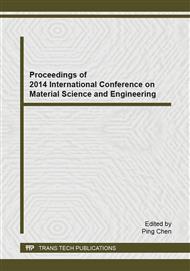p.381
p.385
p.392
p.396
p.401
p.408
p.413
p.417
p.422
A Portable Human Skin Tester Based on Resistance and Capacitance Measurement
Abstract:
A portable tester for accessing the electrical properties of human skin surface is reported. A pair of interdigital electrodes (IDE) that contact directly with the human skin, is used as the sensing element. The impedance of the sensing system is modeled as a resistance and a capacitance in series. A square wave signal is applied so that impedance of the IDE is measured in a charging/discharging way. The response voltages of the IDE at two excitation frequencies, 10 kHz and 600 Hz, are measured successively during one measurement cycle. Since the equivalent capacitance of skin performs different frequency-dependent property other than the resistance, their values can be resolved from the measured response voltages. A microprocessor-based system is implemented as a prototype battery-powered portable unit for household measurements. Good repeatability and satisfied accuracy have been obtained by experimental results.
Info:
Periodical:
Pages:
401-407
Citation:
Online since:
October 2014
Authors:
Price:
Сopyright:
© 2014 Trans Tech Publications Ltd. All Rights Reserved
Share:
Citation:


